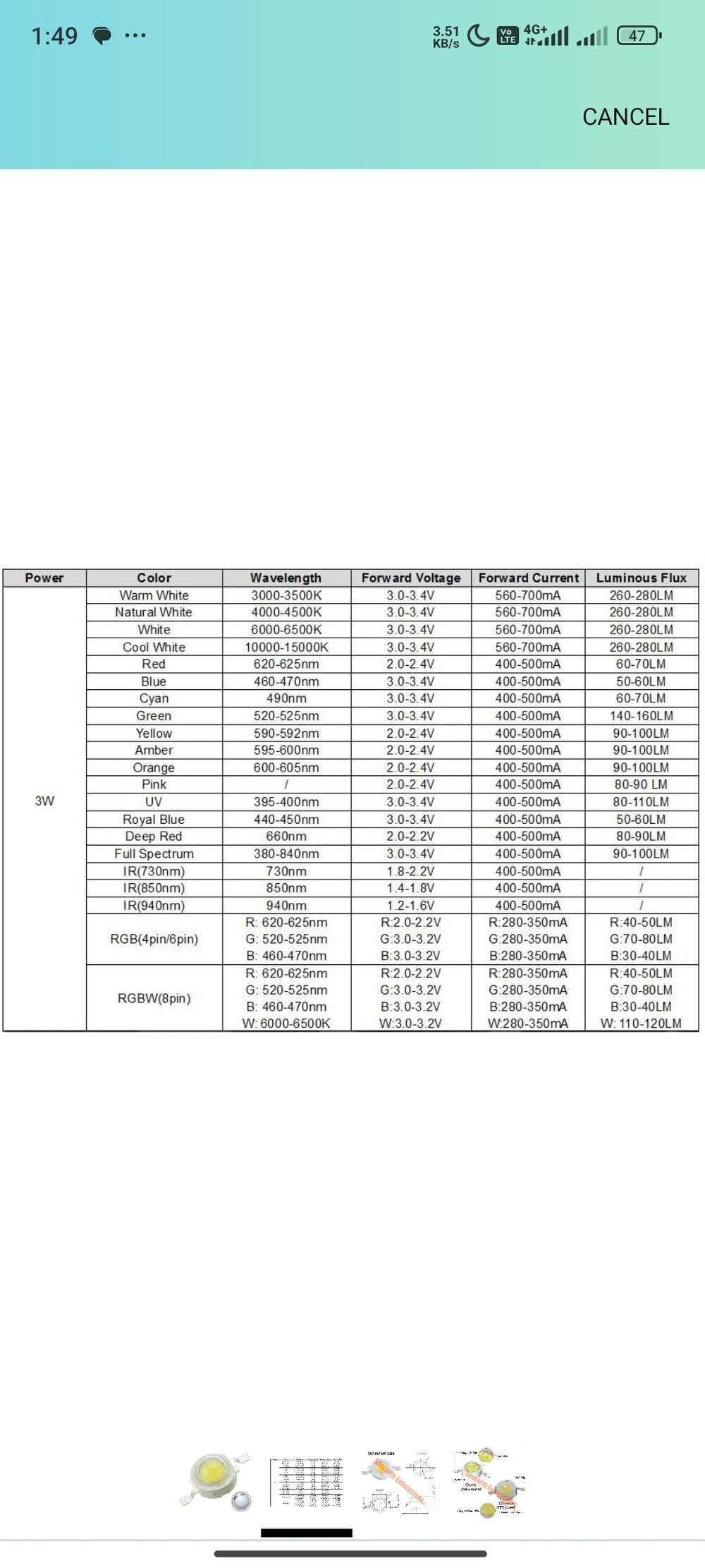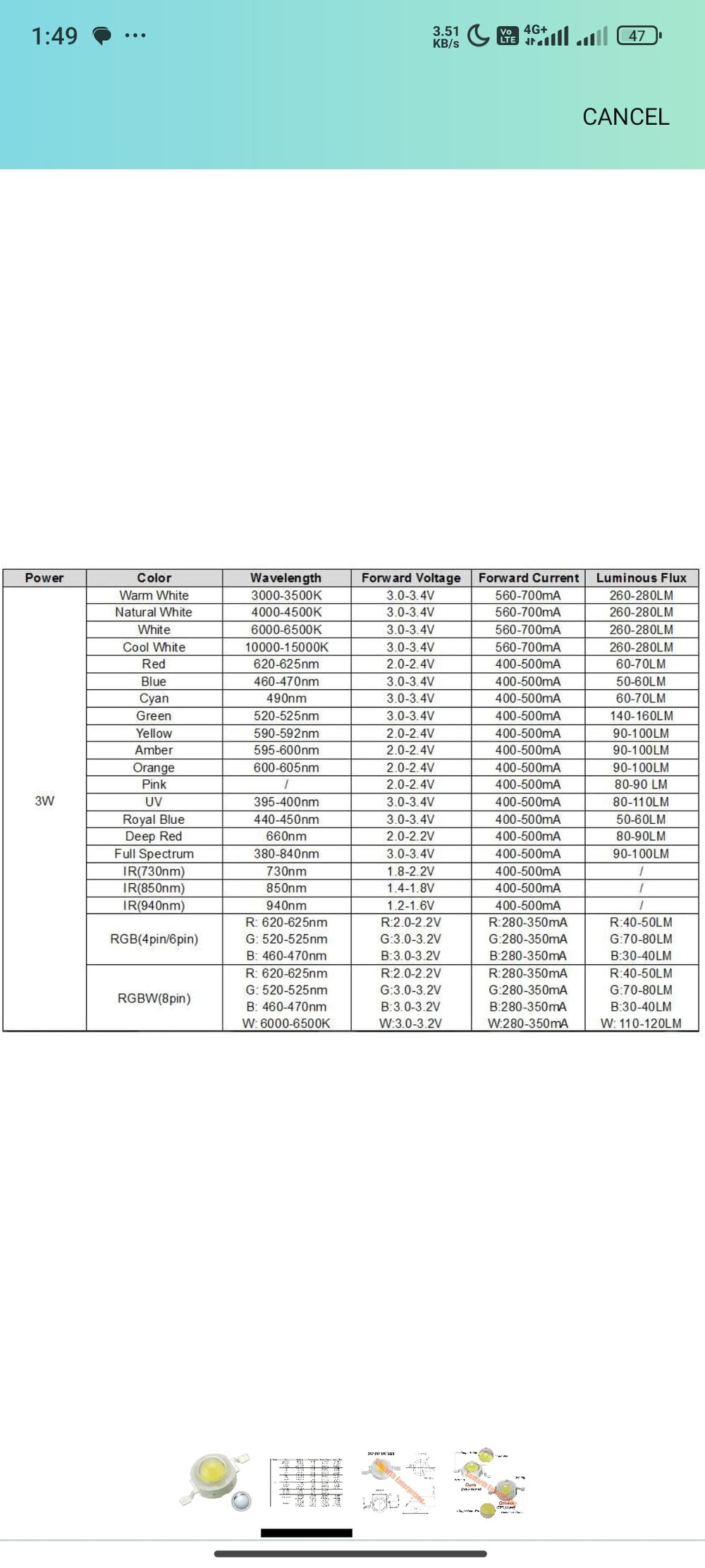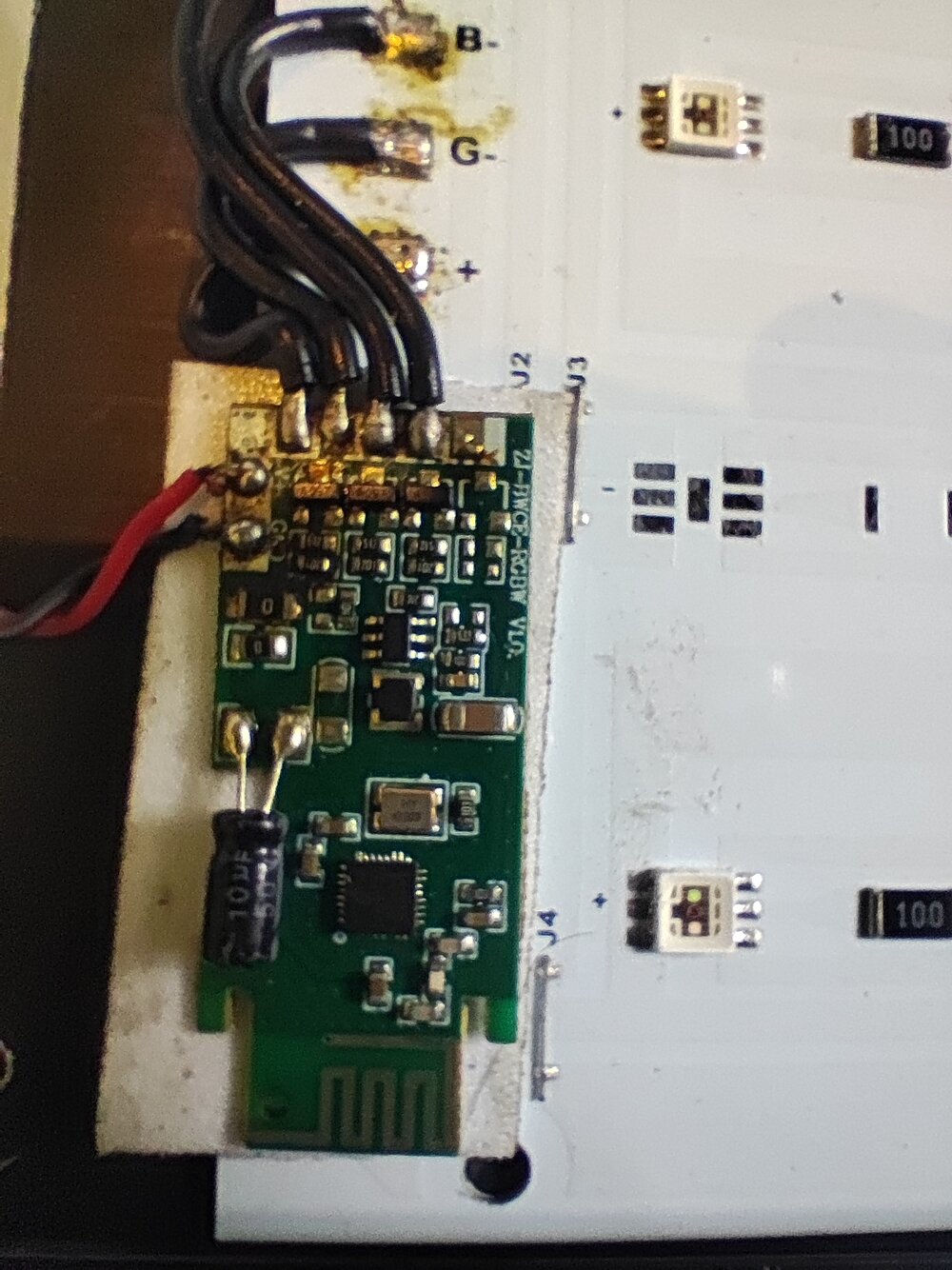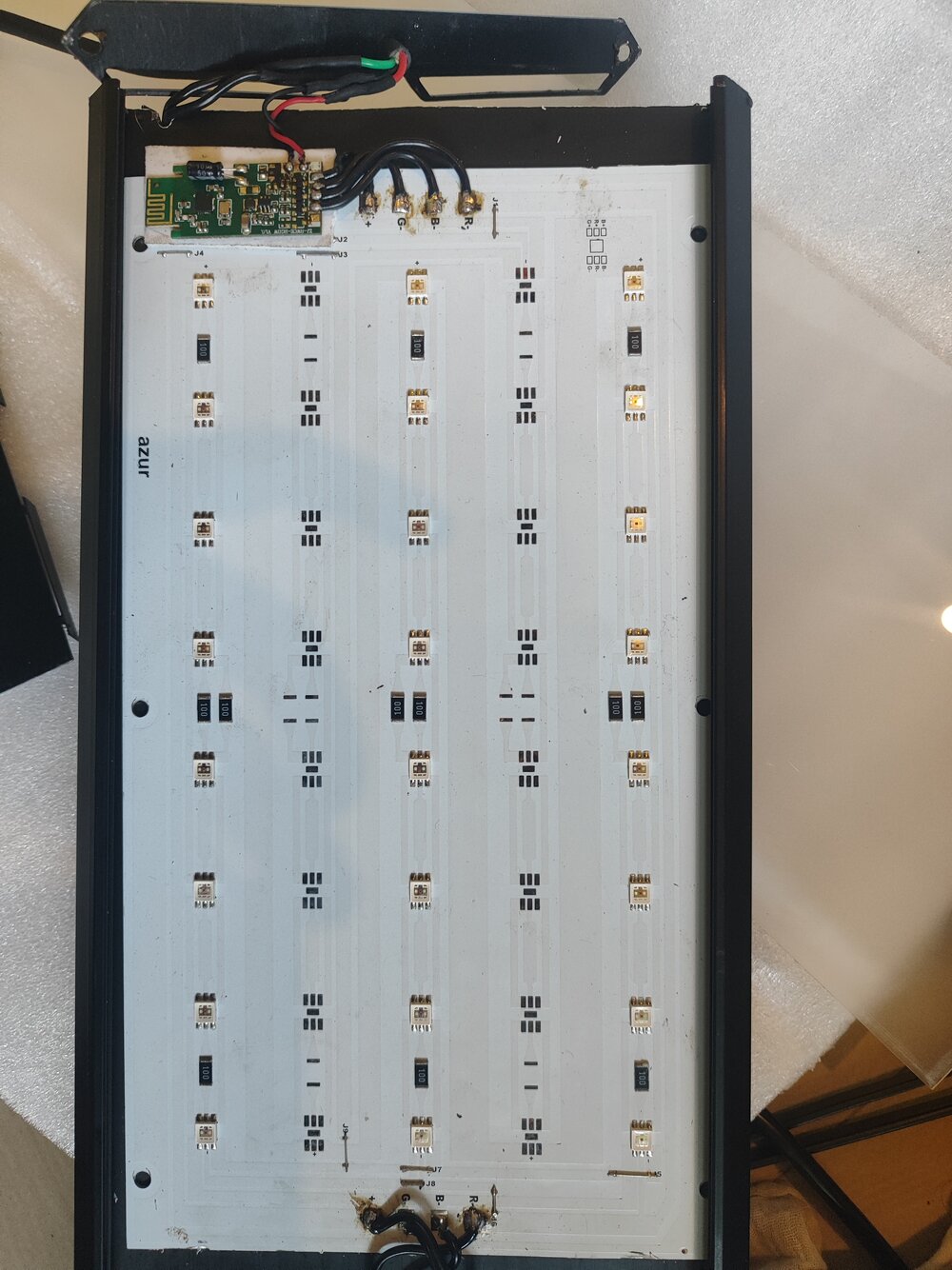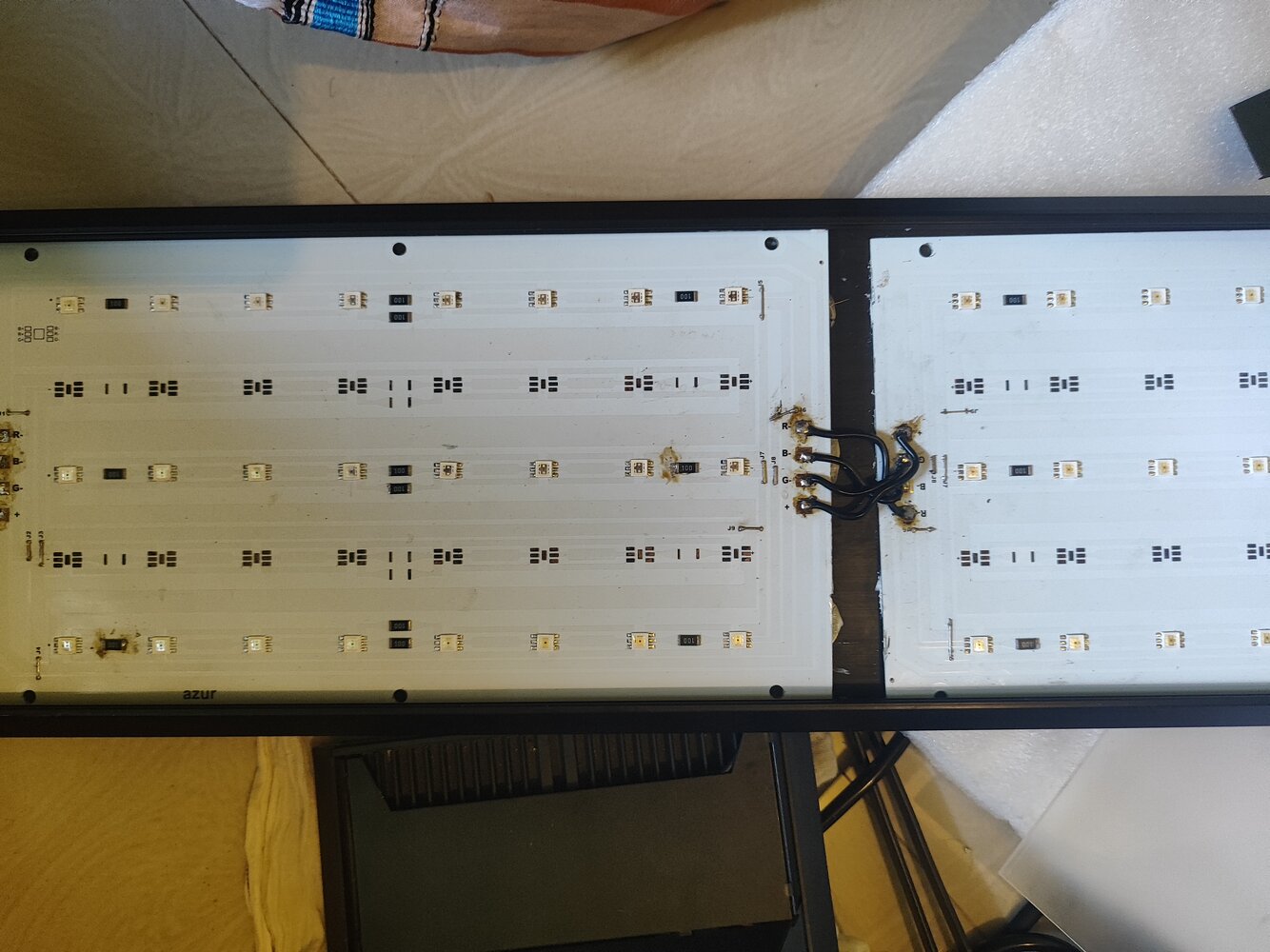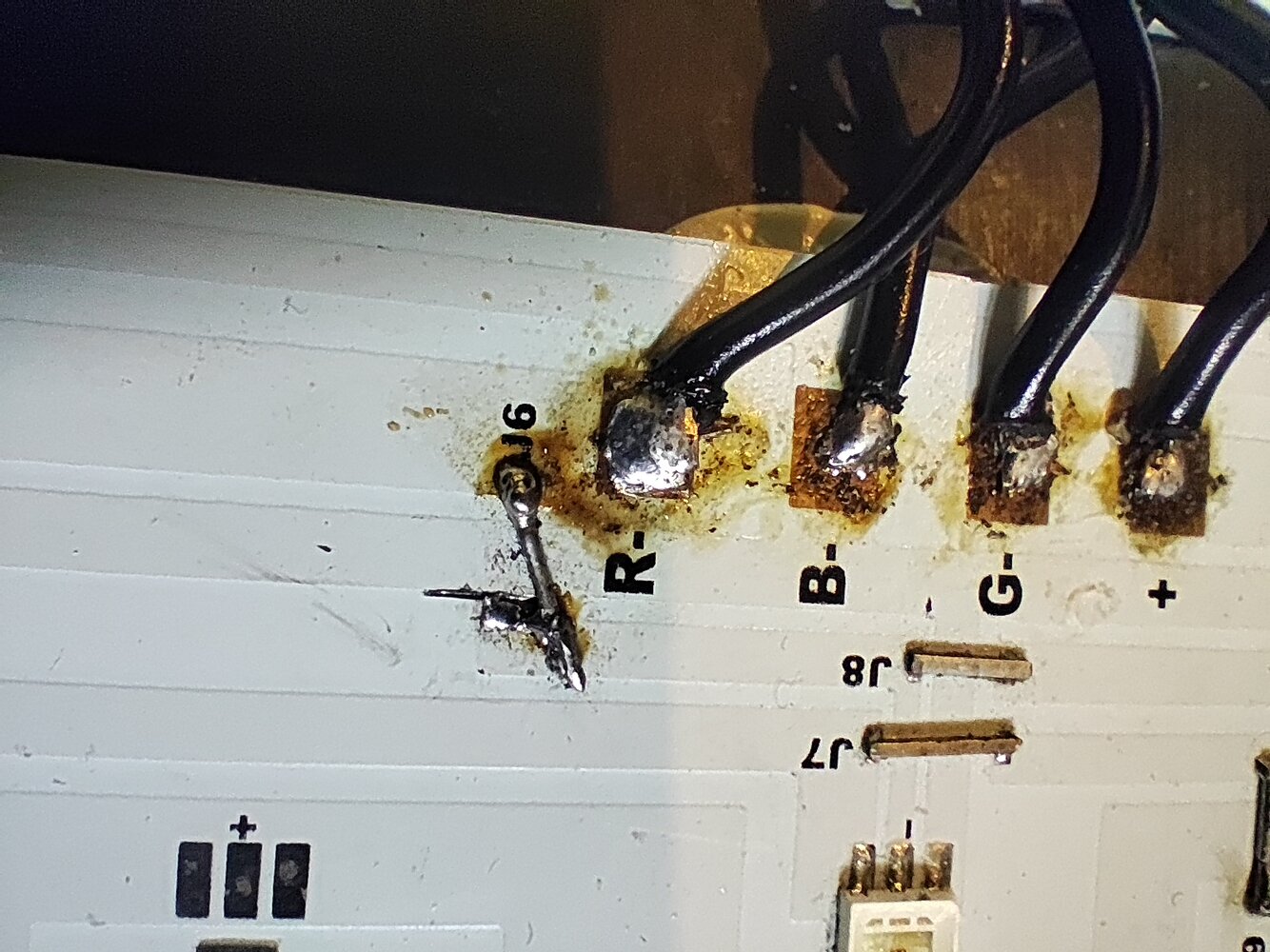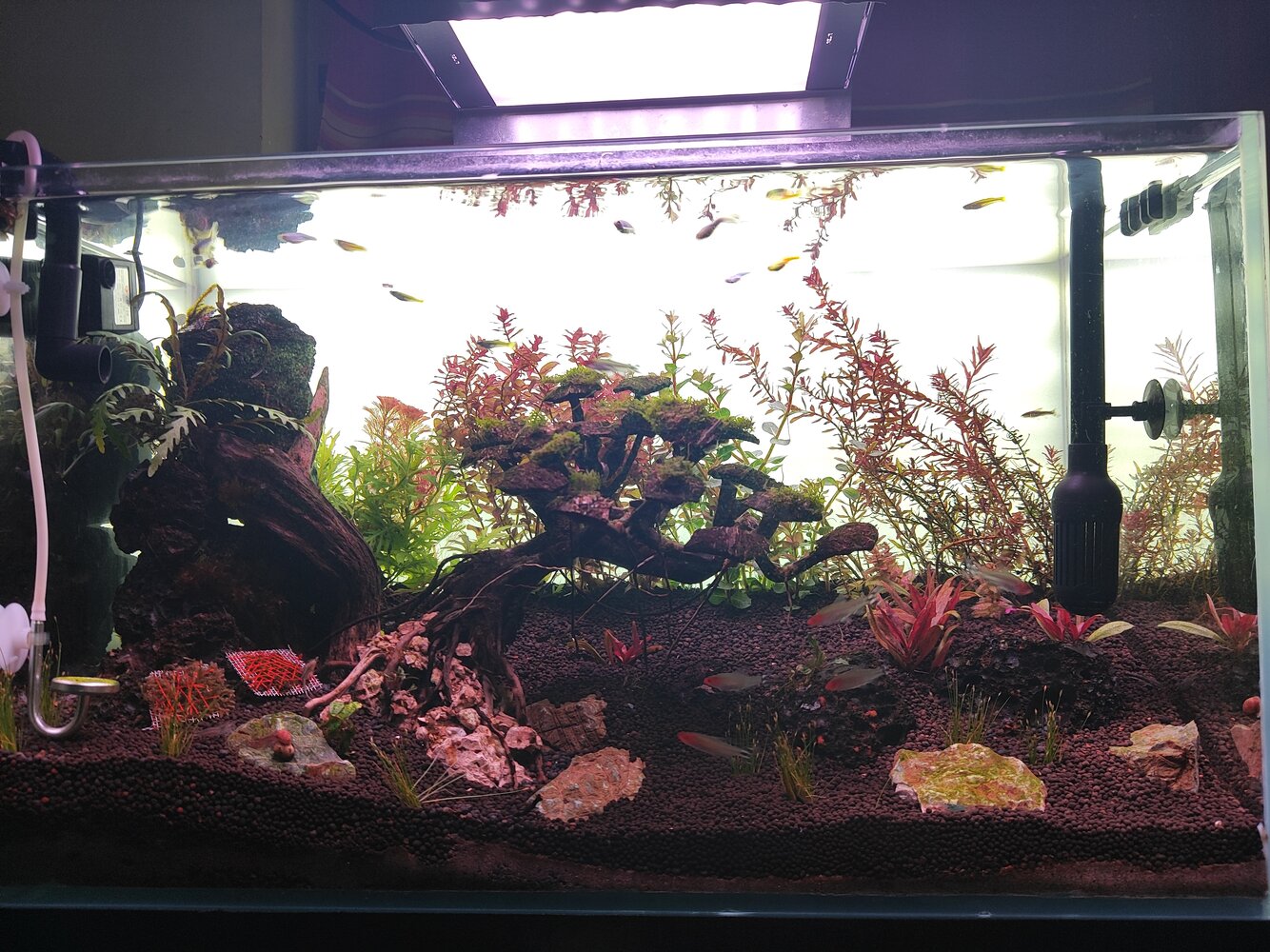-
You are viewing the forum as a Guest, please login (you can use your Facebook, Twitter, Google or Microsoft account to login) or register using this link: Log in or Sign Up
DIY LED Full Spectrum Design
- Thread starter kingdamm
- Start date
Well, again, it's a very narrow view to ascribe only one factor as being the only factor in a coloration. Intensity is a key factor. Plants produce pigments to protect themselves from the radiation. What folks don't seem to realize is that the colors that we like to see in plants is actually a defense mechanism to minimize radiation poisoning, in the same way that pigment cells in our skin protect us, to some extent, from sunburn. There are many reasons for pigments and the plant will allocate pigment types in response to the environmental stresses they are facing at the time. The resulting colors that we see are a combination of the various pigment types that are produced based on each type of stress.
The plant also has to be able to assemble the pigments, which are very energy expensive, therefore, CO2 and nutrition plays a key role in whether or not the raw ingredients are available to fabricate the pigment structure.
Chlorophyll is a Nitrogen hungry pigment and it is green. In a Nitrogen poor environment and under high lighting, the Chlorophyll levels will be minimized and that will reveal the other pigments that are produced as "sun screen", but, if that is taken too far then the plant will become weak and there will be health issues.
Genetic is also a factor. It's always best to get plants that genetically have large amounts of the pigment colors that you like. That makes it a lot easier without having to stress the plant.
So in fact, just because Tom has a certain combination of bulbs it doesn't automatically mean that the plants in your tank will look as nice as his. It is the totality of all the things he does in his tank that produces the results you see, not just the bulbs. Having said that, if you add a lot of red diode or red bulbs, of course everything in the tank will look more red. That goes without saying. That includes the fish.
That's why I'm saying that you don't really have to worry about what Kelvin value will grow the plants, but if you want to add the illusion of color then use a combination of bulbs to produce the visual illusion. That is what Tom is doing with those bulbs. He did not calculate what Kelvin colors were optimal for growth. He simply likes the colors that the combination of bulbs reflect on the tank inhabitants.
Here is an example of the fickleness of color. These are two branches of the same Pogostemon stelletta specimen. Under the same set of bulbs (in this case, the supposedly 4000K Osram 840 T5), the two branches stting right next to each other produced radically different colors. I have no idea why. We simply don't have enough control or knowledge right now.

Cheers,
The plant also has to be able to assemble the pigments, which are very energy expensive, therefore, CO2 and nutrition plays a key role in whether or not the raw ingredients are available to fabricate the pigment structure.
Chlorophyll is a Nitrogen hungry pigment and it is green. In a Nitrogen poor environment and under high lighting, the Chlorophyll levels will be minimized and that will reveal the other pigments that are produced as "sun screen", but, if that is taken too far then the plant will become weak and there will be health issues.
Genetic is also a factor. It's always best to get plants that genetically have large amounts of the pigment colors that you like. That makes it a lot easier without having to stress the plant.
So in fact, just because Tom has a certain combination of bulbs it doesn't automatically mean that the plants in your tank will look as nice as his. It is the totality of all the things he does in his tank that produces the results you see, not just the bulbs. Having said that, if you add a lot of red diode or red bulbs, of course everything in the tank will look more red. That goes without saying. That includes the fish.
That's why I'm saying that you don't really have to worry about what Kelvin value will grow the plants, but if you want to add the illusion of color then use a combination of bulbs to produce the visual illusion. That is what Tom is doing with those bulbs. He did not calculate what Kelvin colors were optimal for growth. He simply likes the colors that the combination of bulbs reflect on the tank inhabitants.
Here is an example of the fickleness of color. These are two branches of the same Pogostemon stelletta specimen. Under the same set of bulbs (in this case, the supposedly 4000K Osram 840 T5), the two branches stting right next to each other produced radically different colors. I have no idea why. We simply don't have enough control or knowledge right now.

Cheers,
clone
Member
- Joined
- 11 Jan 2013
- Messages
- 204
Hi, that is an interesting theory....but I dont really think that carothenoids are acting as a sun screen the same as melanin in human body after exposure under sunlight. Dont forget that the UV are harmful not the red wavelenghts in the light spectrum. I dont think bringong the carothenoids up by enhancing the red spectrum of your fishtank light is dangerous for the plants, there are no UVa or b in the LED lights so......plants just want to absorb the energy more efficient buy building up more carothenoids than chlorophyl thats all. And yes the process is energy consuming and playing with hi-energy light is playing with fire...more CO2 more nutrition for the plants.
Hi,
Thanks all for making this post more knowledgable as day progresses..😀
Here is the image...🙂😀

The image is been blurred for the upcoming ADA contest which i took 3 months back.. lots of new changes back there..
Suggest.... should i increase the total wattage to something near to 120w...
Thanks
Kingdamm
Sent from my GT-I9300 using Tapatalk
Thanks all for making this post more knowledgable as day progresses..😀
Here is the image...🙂😀

The image is been blurred for the upcoming ADA contest which i took 3 months back.. lots of new changes back there..
Suggest.... should i increase the total wattage to something near to 120w...
Thanks
Kingdamm
Sent from my GT-I9300 using Tapatalk
Last edited:
Increasing the intensity can sometimes result in increased pigmentation, however, it also carries the penalty of requiring more nutrients/CO2 so these should be adjusted as well if they are not already at limiting values.The image is been blurred for the upcoming ADA contest which i took 3 months back.. lots of new changes back there..
Suggest.... should i increase the total wattage to something near to 120w...
I did not say that caratenoids are necessarily the sunscreens. There are thousands of different pigment types that plants have access to. Any combination can be used to reflect high PAR. FYI shining a light on a plant does two things:Hi, that is an interesting theory....but I dont really think that carothenoids are acting as a sun screen the same as melanin in human body after exposure under sunlight. Dont forget that the UV are harmful not the red wavelenghts in the light spectrum. I dont think bringong the carothenoids up by enhancing the red spectrum of your fishtank light is dangerous for the plants, there are no UVa or b in the LED lights so......plants just want to absorb the energy more efficient buy building up more carothenoids than chlorophyl thats all. And yes the process is energy consuming and playing with hi-energy light is playing with fire...more CO2 more nutrition for the plants.
1) Light imparts photonic energy to pigment cells to liberate electrons to be used to fabricate energy producing proteins.
2) Light damages the plant's light harvesting cells and results in a phenomenon called "photoinhibition". ALL light is damaging, not just UV. It's just that UV is more damaging than the longer visible wavelengths. When exposed to high PAR however, damage is done to the cells. Too much PAR absorbed by the Chlorophyll molecule liberates too many electrons and these charged particles cannot be removed from the chlorophyll fast enough, so they cause damage by colliding with the nearby particles causing ionization.
Pigments in the class of Anthocyanins are examples of sunscreen pigments. They fluoresce away excessive PAR energy. This mechanism is known as "fluorescence quenching".
Cheers,
clone
Member
- Joined
- 11 Jan 2013
- Messages
- 204
Thanks for the answer, which i tataly agree with. Of course there are limits of light radiation we can expose the plants and lenght of photoperiod also, where we have optimal photosynthesis without damaging the plants structures.
Awesome tank btw..as long as I can see😀 good luck on the contest😉
Awesome tank btw..as long as I can see😀 good luck on the contest😉
Mr. Teapot
Member
- Joined
- 30 Apr 2013
- Messages
- 461
Just dipping in this discussion as I came across an interesting article about why plants produce anthocyanins as a sunscreen to protect vulnerable chloroplasts. More interestingly, the author stated they also produce them to aid the reabsorption of nitrogen. Apparently, current thinking is the red autumn leaves are not as a result of the loss of leaf's green pigments revealing the other colours, but as a result of the plant producing anthocyanins to aid the reabsorption of valuable nitrogen released by the breakdown of chlorophyll at the end of the growing season.
Is this why nitrogen deficiency and/or high light both produce red leaves?
Is this why nitrogen deficiency and/or high light both produce red leaves?
flygja
Member
Adding my own experience into the mix. My 60cm tank was planted with Rotala rotundifolia red. It had 45W worth of Cree 6500K LEDs making about 80-100 PAR at the substrate. The stems grew, but never turned red. Only very slightly pink just under the water surface.
I then changed the lighting to 2x 24W PLL. Don't knowbwhat brand of bulbs and spectrum. Everything else the same - CO2, dosing, temp. And my plants started turning red about 2 inches below the surface. I haven't measured PAR but I think it makes about half as much compared to LEDs.
So from experience, it seems like that a different spectrum does produce different results. And not just visually. Although plant growth rate remained mostly the same.
I then changed the lighting to 2x 24W PLL. Don't knowbwhat brand of bulbs and spectrum. Everything else the same - CO2, dosing, temp. And my plants started turning red about 2 inches below the surface. I haven't measured PAR but I think it makes about half as much compared to LEDs.
So from experience, it seems like that a different spectrum does produce different results. And not just visually. Although plant growth rate remained mostly the same.
G
Guest
Guest
Haha...there has been many a heated discussion on this subject, not just on this forum, and not least between Clive and myself😉 Mine's not a very popular theory, but I happen to think that spectrum does matter😛However, the impact on our plants usually isn't noticeable because we tend to use full spectrum bulbs or arrays of more than adequate intensity. So the quality of light we give our plants is usually more than sufficient for healthy growth. So for the most part all that really need concern us is aesthetics.
Nevertheless, with the increasing popularity of LED light fixtures and home made arrays there does seem to be some very interesting observations and anecdotal evidence surfacing with regards the effect of spectrum on aquatic plant growth.
Nevertheless, with the increasing popularity of LED light fixtures and home made arrays there does seem to be some very interesting observations and anecdotal evidence surfacing with regards the effect of spectrum on aquatic plant growth.
Mr. Teapot
Member
- Joined
- 30 Apr 2013
- Messages
- 461
I then changed the lighting to 2x 24W PLL.
If everything else's was the same, perhaps the reds were promoted by the fluorescent bulbs emitting a small amount of ultraviolet? Doesn't explain Clone growing those lovely reds under LEDs though.
flygja
Member
If everything else's was the same, perhaps the reds were promoted by the fluorescent bulbs emitting a small amount of ultraviolet? Doesn't explain Clone growing those lovely reds under LEDs though.
I don't know why. Clone's LEDs are a mixture of neutral white, warm white, red and royal blue. Mine were just neutral whites.
Sushanth Kiran Bhat N
New Member
I am Sushanth Kiran Bhat N from india . I would love discuss more about the making own rgb led light for my aquarium.Can u provide any details of your to get in contact with you . please 🙏.
First if you are going to build it yourself I'd not settle for just RGB.I am Sushanth Kiran Bhat N from india . I would love discuss more about the making own rgb led light for my aquarium.Can u provide any details of your to get in contact with you . please 🙏.
Deep red(660), green, amber,royal blue(450)
Or if really adventurous deep red,cyan,amber,blue(470).
You can play with this calculator:
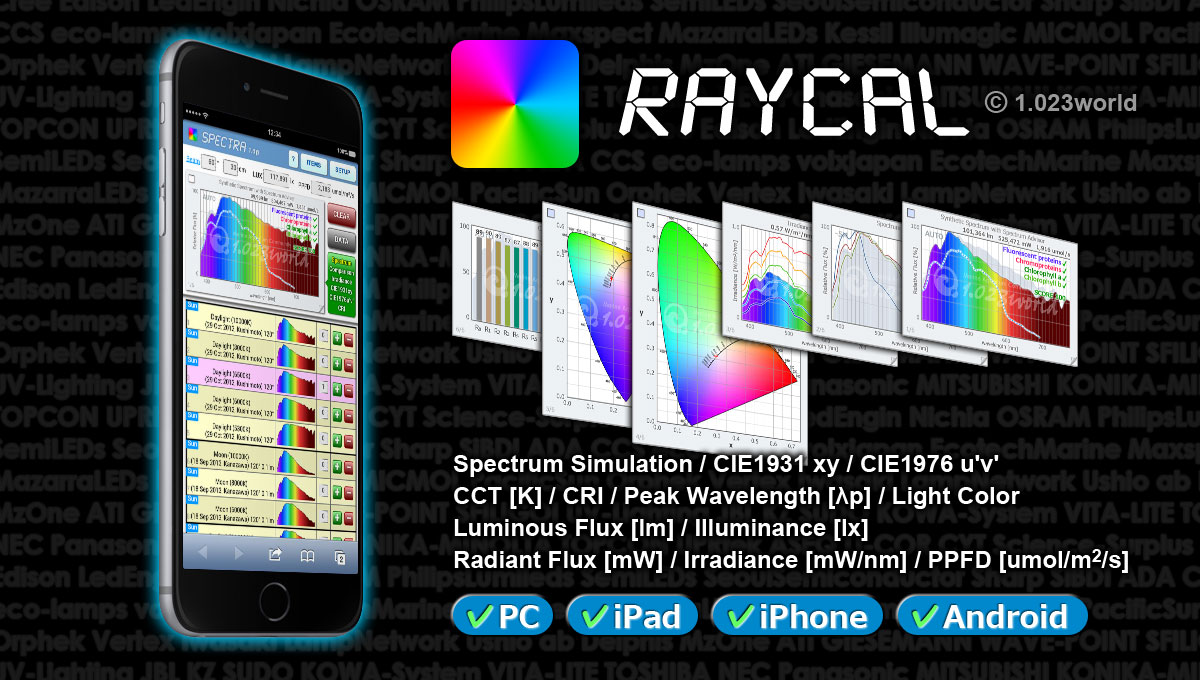
RAYCAL
RAYCAL can perform the optical simulation of many required for coral breeding. RAYCALはサンゴ飼育に必要な多くの光学シミュレーションを行う事が可能です。
Decide what your best look is and use that as a sort of template for the 100% mark.
Like a cool white look.
Green tint look
Magenta look
Natural look.
See the tone swatch here ( color):

View attachment 219393
A " cooler" version...

Want to simplify with a really good look (95 cri) but less color punch (at 100%) than a RGB look.

I have no idea what LEDs you have easy access to so hard to build.
Last edited:
Mike Singh
Member
What’s the build cost to make one of these DIY LED lights?
Depends on numerous factors.What’s the build cost to make one of these DIY LED lights?
Bottom line is unless you just use those RGB 5 meter rolls of LEDs or even plain white and use like smart home controllers you probably won't save money.
Or maybe a bunch of 5/$ eBay LEDs.
It's more if the idea of making it " your" build.
Like doing redgreenblueamber over RGB.
Last edited:
Sushanth Kiran Bhat N
New Member
Sushanth Kiran Bhat N
New Member
There you go i have these ones in my locality for sale. Could you sort me out which one to use and can i go for a rgb Bluetooth controllers .First if you are going to build it yourself I'd not settle for just RGB.
Deep red(660), green, amber,royal blue(450)
Or if really adventurous deep red,cyan,amber,blue(470).
You can play with this calculator:

RAYCAL
RAYCAL can perform the optical simulation of many required for coral breeding. RAYCALはサンゴ飼育に必要な多くの光学シミュレーションを行う事が可能です。1023world.net
Decide what your best look is and use that as a sort of template for the 100% mark.
Like a cool white look.
Green tint look
Magenta look
Natural look.
See the tone swatch here ( color):
View attachment 219392
View attachment 219393
A " cooler" version...
View attachment 219399
Want to simplify with a really good look (95 cri) but less color punch (at 100%) than a RGB look.
View attachment 219396
I have no idea what LEDs you have easy access to so hard to build.
Attachments
Simplist would be to use the multi chips.There you go i have these ones in my locality for sale. Could you sort me out which one to use and can i go for a rgb Bluetooth controllers .
RGB or rgb6500kw.
Controls color blending.
As to controllers cheapest is if you design it to be run at constant voltage not current.
That is what's used to control those 5m ribbons of LEDs ect.
Designing around it is a bit of hit and miss as to the size of the resistor.
And wiring a bunch of strings in a series/ parallel fashion is more complicated than just running large series strings.
But first decide on what your base spectrum will be. You can use this and the generic 1w
LEDs

RAYCAL
RAYCAL can perform the optical simulation of many required for coral breeding. RAYCALはサンゴ飼育に必要な多くの光学シミュレーションを行う事が可能です。
Not wired but what I consider a general starting plan.. I'd probably change green to cyan.

cyan instead of green.

Last edited:
Sushanth Kiran Bhat N
New Member
Can make it easy for me with the spectrum thing.These are brod terms to catch upon. If you have time would u teach me more on those terms and i don't know how to use raycal 2.0. I just thought spectrum can be changed with use of Bluetooth controllers.Bt making a light jst like Chihiros vivid with individual colored emitters is much better and light intensity that is brightness can be controlled would be better.Help me decide which one is good.These images shown is a aquarium lights made in India the with rgb leds and a Bluetooth controllers which can make colour changes and brightness change.I use this one in my aquarium.Simplist would be to use the multi chips.
RGB or rgb6500kw.
Controls color blending.
As to controllers cheapest is if you design it to be run at constant voltage not current.
That is what's used to control those 5m ribbons of LEDs ect.
Designing around it is a bit of hit and miss as to the size of the resistor.
And wiring a bunch of strings in a series/ parallel fashion is more complicated than just running large series strings.
But first decide on what your base spectrum will be. You can use this and the generic 1w
LEDs
Digging through my old files iI found this.
RAYCAL
RAYCAL can perform the optical simulation of many required for coral breeding. RAYCALはサンゴ飼育に必要な多くの光学シミュレーションを行う事が可能です。1023world.net
Not wired but what I consider a general starting plan.. I'd probably change green to cyan.
View attachment 219745
cyan instead of green.
View attachment 219746



